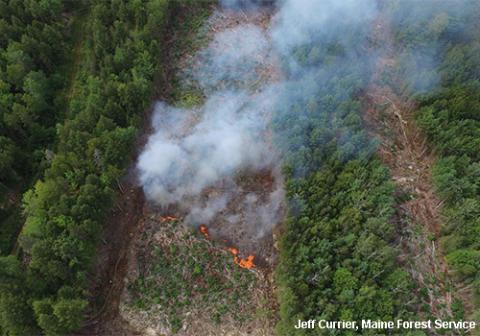A Long-Term Perspective on Biomass Harvesting: Northern Conifer Forest Productivity 50 Years After Whole-Tree and Stem-Only Harvesting

Whole-tree harvesting has become more common in northeastern forests, but concerns remain about effects of biomass removal on long-term site productivity compared to stem-only harvests which leave tree tops on the ground. Burning of slash following harvest also reduces aboveground biomass and could affect site productivity.
NSRC researchers measured productivity in the oldest known study of biomass harvesting in temperate forests worldwide in Maine’s Penobscot Experimental Forest. This study was established in 1964-65 within 70-80-year-old spruce-fir-dominated stands of low to moderate production before widespread use of whole-tree harvesting. Strip-cut treatments (all trees > 1.3 meters tall were cut) included whole-tree harvesting (WTH); stem-only harvesting (SOH); and stem-only harvesting with burning (SOHB). Four years after treatment, the hardwood component of regenerating stands increased compared to pre-harvest especially on SOHB sites, and mineral soil was more exposed in WTH than in SOHB.
In 2014, researchers measured stand structure, carbon stock, species composition, and soil and foliar nutrients. Fifty years after harvest, they found no differences in stand structure or carbon stock across treatments. Pre-harvest, stands were 50% spruce-fir and 25% hardwood. In 2014, stands were 36% spruce-fir and 60% hardwood. Burning after clearcutting increased the hardwood component, possibly due to mortality of young softwoods or reduction of their seed source. WTH sites had the most eastern white pine, which may be due to greater mineral soil exposure for seed germination. Findings suggest that single applications of WTH or SOHB does not degrade long-term site productivity in northern mixedwood forests of low to moderate productivity. Further research will examine soil and foliar nutrients.
